Today we were warned that our guides would just have to tell us about modern day Franconia! It seems the Germans in this state of Bavaria still refer to themselves as 'Franconians' despite the fact that Franconia became part of Bavaria more than 200 years ago in 1803, thanks to Bavaria's alliance with Napoleon. I have this feeling that we were lucky with our guide Victoria.... because she didn't speak about it at all. Maybe that was because she had been born in Colombia. Who knows! But one thing was for sure. We weren't going to lose her in the hat and raincoat she had on!!
It seems like all this hanging on to 'Franconia' stuff, is a bit ridiculous to us, and can be totally confusing for the tourist! There's Upper and Lower Franconia, mostly Roman Catholic's in Upper, Evangelical Church in the middle and eastern and even though there is no Franconian state, red and white are regarded as the state colours, whereas white and blue are true Bavarian colours. But they do all agree that they make the best wine in this area of Germany....and we are in 'Wine Franconia'.
As our optional tour today, we chose to go to Rothenburg, which was an hour by coach out into the country. Our tour guide gave us lots of facts about Wurzburg and farming in Bavaria during our travel. Victoria's father farmed 2,000 ducks in Colombia.
Wurzburg has a population of 125,000 and once again there are 30,000 university students studying in the city. The university is one of the oldest in Germany. It was founded before Christopher Colombus discovered the new world in 1492. Victoria said "Wurzburg is a city of universities and administration". On the 16th March 1945, just before the end of WW2 the city of Wurzburg was bombed and 97% of the city was destroyed. So the majority of the city has been rebuilt. Wurzburg was named 'The Grave on the Main River'.
There were lots of vineyards on our drive. The grapes will be harvested in about 4 weeks and the harvesting is all done manually. There are 13 wine regions in Germany. 80% of white wine is grown in this area and Riesling accounts for only 5% of the wine. Only two varieties of grapes are grown mainly. Grape growing in the region was seven times higher before the war of 1500 and the 30 year war of the 1600's. Every tour guide brings the affect of these wars into their presentation to us.
Now for the farming facts! All the barley has been harvested and they have just started on the wheat. The crops are very good and harvesting looks like it will be a challenge. The crops are starting to go down. Maybe because of the terrible summer and the rain they have been experiencing. Peter estimated eight tonne crops or more and asked Victoria if she knew what sort of yields they received, but she did not. She will research for the next tour! The average size farm is around 35 hectares and the value of the land is 55,000 euros per hectare. Farmers live in nearby villages and in the village they have barns for their stock. One barn even had lace curtains at the windows. Lucky cows! They grow English sugar beet and corn to feed the animals. Approximately seven roots of the sugar beet will produce 1 kg of sugar. We did see 8 cows grazing in a small paddock, but that farmer is classed as a 'greenie' in Germany. The land is too valuable to have cows walking around eating the grass! Victoria said "You know that Abba song 'Money, Money, Money'!
There were wind turbines in the paddocks. There are more and more of them being placed on the land in Germany. There were also lots of solar panels on the barns. It is a regulation that a wind turbine cannot be within 2 kms of a home. The aim of the German Government is to have no nuclear or coal power by 2020. To put that into perspective, the following statistics will definitely add to the challenge. The population of Germany is 81 million and the country has a population of 232 persons per square kilometre. Australia's statistic is 4!
We docked at Wurzbug around 8.30am and we were not disappointed we had chosen Rothenburg over a visit to the 'Residenz Palace' that overlooks the city of Wurzburg. Rothenburg is one of the most picturesque villages in all of Germany and the weather was much nicer today and we did not need our umbrella.
The Rothenburg medieval village is completely surrounded by its city wall and is full of charm. It is certainly very touristy but well worth the visit. Rothenburg is also the home of Germany's famous, and the original Kathe Wohlfaht Christmas Store. The store was so, so beautiful. I can't resist a Christmas store. We had just under 2 hours to wander or race around, the medieval village which has been named the 'Jewell of the Middle Ages'. There was no time for a coffee!
About 2,000 people live within the walled part of the city and they are people involved with the industry there. Victoria ensured that she pointed out the stepped gabled roofs on a number of houses, and this is 1600 renaissance architecture. A crow-stepped gable, stepped gable or corbie step is a stair-step type of design at the top of the triangular gable-end of a building. Each guide has their own personal passion for the history and it was good to take note of these gabled roofs. It is truly magnificent architecture and one continues to marvel at the skill of craftsmen of that era with so little tools to assist them. The medieval homes were the same half timber architecture as we had seen in Miltenberg.
Once back in Wurzburg we had lunch on the ship and as it was an easy 10 minute walk to the city, where we spent some time wandering the historic bridge and town centre. The 'Residenz Palace' used to have 12 kilometres of fortress walls. The Prince-Bishops of Würzburg resided in the palace until the 18th century. Then they decided they wanted to move to the chapel on the hill. But it was too small and so there is a lot of history about archbishops etc moving back and further construction on the palace. It was nearly totally destroyed in the 1945 bombing of Wurzburg and from 1945 to 1987, the building and its interiors were reconstructed to their current state. The cost was 20 million euros. The Würzburg Residence with its Court Gardens and Residence Square was inscribed in the UNESCO World Heritage list in 1981.
The AmaReina sailed for Bamberg at 4.45pm.
This evening we dined with Dave and Nola from the Hunter Valley in the Chef's Table Restaurant at the rear of the ship. It is a special dining area that only caters for about 20 guests. The menu is set for the week and will change during our second week of cruising. Guests are only able to dine there once each week and you have to book at reception. The meal was very beautifully presented and the upper level of dining at the back of the ship was very nice. Peter had lamb rack and the lamb is never cooked well enough for him! I had salmon and it was an interesting combination with spinach risotto and a mushroom sauce. Very different!
Wurzburg & Rothenburg-Capital of Wine Franconi
Wednesday, August 03, 2016
 Rothenburg ob der Tauber, Bavaria, Germany
Rothenburg ob der Tauber, Bavaria, Germany
Other Entries
-
1We will soon be up, up and away....
Jul 259 days prior Perth, Australiaphoto_camera4videocam 0comment 7
Perth, Australiaphoto_camera4videocam 0comment 7 -
2Day 1 in the city Paris....capital of France
Jul 268 days prior Paris, Francephoto_camera32videocam 0comment 10
Paris, Francephoto_camera32videocam 0comment 10 -
3A day in Paris to well and truly remember......
Jul 277 days prior Paris, Francephoto_camera42videocam 0comment 4
Paris, Francephoto_camera42videocam 0comment 4 -
4Our last day in Paris was a 'Cultural Experience'
Jul 286 days prior Paris, Francephoto_camera40videocam 0comment 6
Paris, Francephoto_camera40videocam 0comment 6 -
5A Fast Ride to...canals & a walk in Amsterdam
Jul 295 days prior Amsterdam, Netherlandsphoto_camera38videocam 0comment 4
Amsterdam, Netherlandsphoto_camera38videocam 0comment 4 -
6No Cologne...a walk in Bonn instead
Jul 313 days prior Bonn Germany, Germanyphoto_camera34videocam 0comment 5
Bonn Germany, Germanyphoto_camera34videocam 0comment 5 -
7Today was 'Castle Day' on the Rhine River Germany
Aug 012 days prior Rudesheim Germany, Germanyphoto_camera28videocam 0comment 5
Rudesheim Germany, Germanyphoto_camera28videocam 0comment 5 -
8A visit to the picturesque Miltenberg in the rain
Aug 021 day prior Miltenberg, Germanyphoto_camera16videocam 0comment 3
Miltenberg, Germanyphoto_camera16videocam 0comment 3 -
9Wurzburg & Rothenburg-Capital of Wine Franconi
Aug 03 Rothenburg ob der Tauber, Germanyphoto_camera26videocam 0comment 4
Rothenburg ob der Tauber, Germanyphoto_camera26videocam 0comment 4 -
10The incredible RMD Canal & the gem Bamberg
Aug 041 day later Bamberg, Germanyphoto_camera28videocam 0comment 3
Bamberg, Germanyphoto_camera28videocam 0comment 3 -
11A visit to the Nazi city of Nuremberg
Aug 052 days later Nuremberg, Germanyphoto_camera28videocam 0comment 3
Nuremberg, Germanyphoto_camera28videocam 0comment 3 -
12A run for it....but the Bogan Bridge won
Aug 063 days later Regensburg, Germanyphoto_camera24videocam 0comment 1
Regensburg, Germanyphoto_camera24videocam 0comment 1 -
13A long day..but a fabulous day in Salzburg Austria
Aug 074 days later Salzburg, Austriaphoto_camera20videocam 0comment 3
Salzburg, Austriaphoto_camera20videocam 0comment 3 -
14Under the Bogan at 2.00am...now to Vienna
Aug 085 days later Melk, Austriaphoto_camera24videocam 0comment 1
Melk, Austriaphoto_camera24videocam 0comment 1 -
15Two days in the Capital of Classical Music
Aug 096 days later Vienna, Austriaphoto_camera34videocam 0comment 5
Vienna, Austriaphoto_camera34videocam 0comment 5 -
16A short visit to Budapest the Queen of the Danube
Aug 118 days later Budapest, Hungaryphoto_camera45videocam 0comment 0
Budapest, Hungaryphoto_camera45videocam 0comment 0 -
17Farewell to the MS AmaReina.....but Prague awaits
Aug 129 days later Prague, Czech Republicphoto_camera14videocam 0comment 3
Prague, Czech Republicphoto_camera14videocam 0comment 3 -
18Day one in the beautiful city of Prague
Aug 1310 days later Prague, Czech Republicphoto_camera54videocam 0comment 0
Prague, Czech Republicphoto_camera54videocam 0comment 0 -
19Visit to a Chateau in the country..Day 2 in Prague
Aug 1411 days later Prague, Czech Republicphoto_camera40videocam 0comment 0
Prague, Czech Republicphoto_camera40videocam 0comment 0 -
20A flight and the 'Chunnel' to get to London
Aug 1512 days later London, United Kingdomphoto_camera14videocam 0comment 1
London, United Kingdomphoto_camera14videocam 0comment 1 -
21London.....plenty of reminiscing of 32 years ago
Aug 1613 days later London, United Kingdomphoto_camera30videocam 0comment 1
London, United Kingdomphoto_camera30videocam 0comment 1 -
22Six days in Warwick for the 28th ACWW Conference
Aug 1714 days later Warwick, United Kingdomphoto_camera20videocam 0comment 4
Warwick, United Kingdomphoto_camera20videocam 0comment 4 -
23Conference over...now some time with the relies
Aug 2320 days later Merton Devon, United Kingdomphoto_camera22videocam 0comment 6
Merton Devon, United Kingdomphoto_camera22videocam 0comment 6 -
24A great day touring the Moorlands of Dartmoor
Aug 2421 days later Merton, United Kingdomphoto_camera24videocam 0comment 4
Merton, United Kingdomphoto_camera24videocam 0comment 4 -
25South Devon today visiting Brixham & Dartmouth
Aug 2522 days later Dartmouth, United Kingdomphoto_camera24videocam 0comment 2
Dartmouth, United Kingdomphoto_camera24videocam 0comment 2 -
26Lots of walking and climbing today at North Devon
Aug 2623 days later Clovelly, United Kingdomphoto_camera32videocam 0comment 2
Clovelly, United Kingdomphoto_camera32videocam 0comment 2 -
27An overnight stay in Falmouth Cornwall
Aug 2724 days later Falmouth, United Kingdomphoto_camera22videocam 0comment 1
Falmouth, United Kingdomphoto_camera22videocam 0comment 1
Comments
2025-05-23
Comment code: Ask author if the code is blank

 Rothenburg ob der Tauber, Bavaria, Germany
Rothenburg ob der Tauber, Bavaria, Germany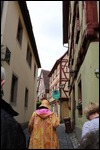
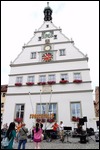
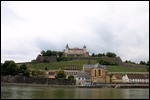
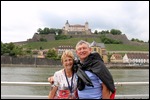








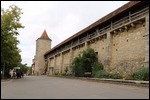
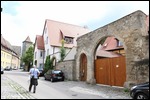
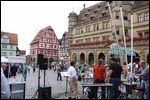
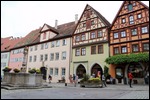
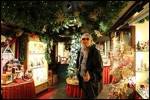
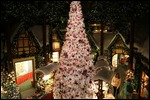
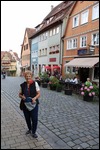
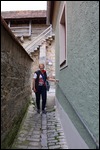

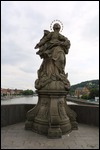
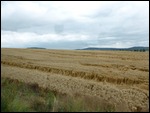
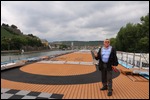
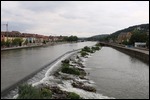
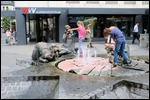
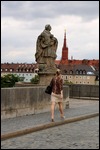
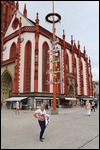
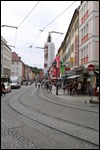
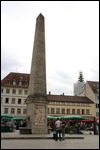
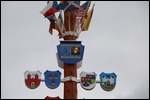
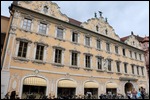
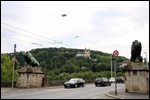
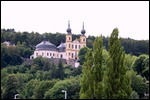
Donelle & Bill James
2016-08-07
You are enjoying all the wonderful sights & aren't there plenty. Bill can't get over how much info you write good on you.
dorothystokes
2016-08-07
We agree Peter, steak can be a bit rare but not lamb
Delma
2016-08-07
Amazing architecture - all so different and a Christmas shop as well - Yeh!